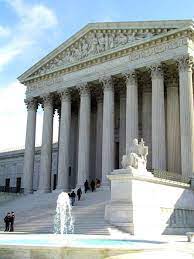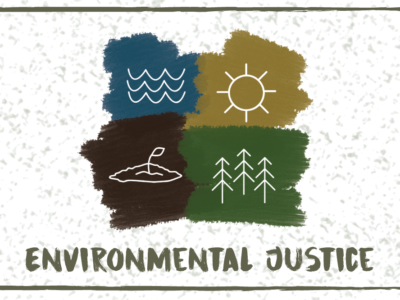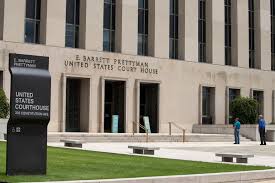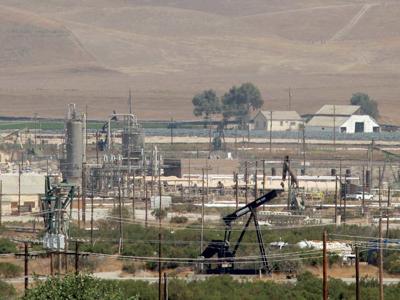Regulatory Policy
A(nother) California “Regulatory Takings” Case Heads to the Supreme Court
Newly-accepted case pits private property rights against government land use authority
The U.S. Supreme Court has agreed to hear and decide an important “regulatory takings” case from California that has major implications for federal, state and local governments nationwide. The case is Sheetz v. County of El Dorado, Docket No. 22-1074. Even before the justices granted review in the Sheetz case last Friday, the Court’s 2023-24 …
Continue reading “A(nother) California “Regulatory Takings” Case Heads to the Supreme Court”
CONTINUE READINGCan We Use Regulation to Reduce Inequality?
Contrary to some, I think the answer is yes. And here’s how we can do it.
Inequality is a burning issue in our society but plays only a limited role in the design of regulations. In an article that came out a week ago, I try to work through questions about how economic and racial inequality can be integrated into rule-making. In terms of economic inequality, the current system already has …
Continue reading “Can We Use Regulation to Reduce Inequality?”
CONTINUE READINGGovernor Gavin Newsom announces he will sign landmark climate disclosure bills SB 253 and SB 261!
SB 261 first proposed and drafted by CLEE Climate Risk Initiative
Breaking news! Governor Gavin Newsom just announced on stage at New York Climate Week that he will sign both of the landmark greenhouse gas emissions and climate risk disclosure bills, #SB253 (Wiener) and #SB261 (Stern), the later of which was first proposed and then drafted by our Climate Risk Initiative at the Center for Law, …
CONTINUE READINGCLEE-Proposed Climate Risk Disclosure Legislation Passes CA Legislature
SB 261 results from CLEE report recommendation
The California Legislature passed two path-breaking climate risk disclosure bills this week. Both bills now go to Governor Gavin Newsom’s desk where he has until October 14th to sign them. Senate Bill 261 (Stern) requires major corporations to disclose climate change related financial risks, using a framework consistent with that of the Task Force on Climate …
Continue reading “CLEE-Proposed Climate Risk Disclosure Legislation Passes CA Legislature”
CONTINUE READINGVehicle Regulations on Trial
Three big cases in the D.C. Circuit will determine the fate of Biden’s vehicle regulations.
This week, the D.C. Circuit hears three cases challenging use of federal regulations to push adoption of electric vehicles and to allow California to forge path toward zero-emission cars. If all three cases go badly, the regulatory system would be disabled from playing a role in this area. This would be a huge setback, though …
Continue reading “Vehicle Regulations on Trial”
CONTINUE READINGThe Contradictory Attacks on Biden’s Climate Programs
“Job Killing” or “Overheating the Economy” — Which Is It?
“Job-killing regulations” is a longtime conservative meme. That attack has now been joined by the claim that major new spending for clean energy is overheating the economy. The inflation claim is new, prompted by the passage of the 2021 Infrastructure law and the 2022 IRA. And if they were both right, the two problems would …
Continue reading ” The Contradictory Attacks on Biden’s Climate Programs”
CONTINUE READINGIs Capitalism to Blame?
Some people think we need to abolish capitalism to save the environment.
Bernie Sanders has a book called It’s OK to be Angry at Capitalism. There are certainly a lot of people across the political spectrum who feel that way. Capitalism is blamed for environmental destruction by many of the more radical segments of the Left. That’s not too surprising given the historic connection between the more …
Continue reading “Is Capitalism to Blame?”
CONTINUE READINGState Air Regulations Can Go Above and Beyond National Standards
State and local regulators can and should work to reduce particulate matter, ozone, and NOx emissions even when national standards are met.
States and local air quality regulators have the legal authority to set particulate matter (PM), ozone, and nitrogen oxides (NOx) emissions standards and adopt regulations for these pollutants when they are already in attainment of the national ambient air quality standards (NAAQS) set by the U.S. Environmental Protection Agency (EPA) under the federal Clean Air …
Continue reading “State Air Regulations Can Go Above and Beyond National Standards “
CONTINUE READINGConstraints on Rollbacks
Regulations have some sticking power, even when the White House changes hands.
The Trump Administration’s massive campaign against government regulation was horrifying at the time and depressing in retrospect. Many people have been left with doubts about whether it’s even worthwhile to bother with new regulations, given the risk of a switch in control of the White House. I don’t question Trump’s regulatory carnage. But Obama’s achievements …
Continue reading “Constraints on Rollbacks”
CONTINUE READINGCalifornia Supreme Court Rules County Ordinance Limiting Oil & Gas Development Preempted by State Law
Court Decision May Well Be Correct as a Matter of Law, But Represents Outdated & Unsound Public Policy
Last week, the California Supreme Court unanimously ruled that a local initiative measure that would have imposed severe restrictions on oil and gas development in Monterey County is preempted by state law and therefore invalid. The decision came in the case of Chevron U.S.A., Inc. v. County of Monterey. The Supreme Court’s ruling was predictable, …
CONTINUE READING












